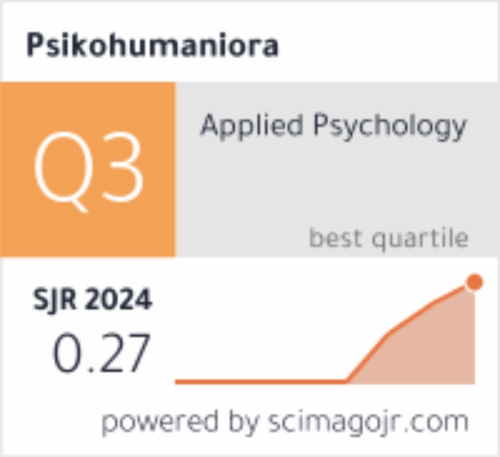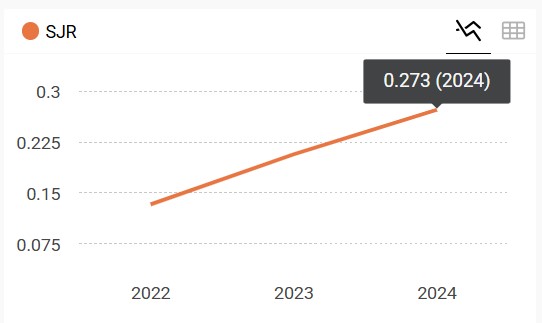How rationality predicts individual perception of safety climate: An application of the hybrid model of learning in personality
DOI:
https://doi.org/10.21580/pjpp.v5i1.5274Keywords:
The Hybrid Model of Learning in Personality, HMLP, individual safety climate, Learning Style Profiler, rationality personalityAbstract
Jackson’s Hybrid Model of Learning in Personality (HMLP) is designed to measure the effect of biological, socio-cognitive, and experiential processes of personality and learning mechanisms on developing rationality and directing functional or dysfunctional behaviors of employees. We use HMLP to determine if rational thinking predicts individual perception of safety climate. The results found that the proposed indirect paths of learning mechanisms significantly predict the individual perception of a safety climate through rationality. The goodness-of-fit demonstrated that the model provided a satisfactory fit: c2 = 13.200, p = .067; RMS = .000; RMSEA = .063; GFI = .981; AGFI = .943; and CFI = .988. As a result, we identify the importance of rationality in predicting individual safety climate and once again confirm the usefulness of HMLP in predicting useful workplace outcomes. The HMLP offers valuable insights into the influence of rationality in predicting individual perception of safety climate, as well as the underlying process of developing rationality.
Downloads
References
Bentler, P. M. (1990). Comparative fit indexes in structural models. Psychological Bulletin, 107(2), 238–246. https://doi.org/10.1037/0033-2909.107.2.238
Beus, J. M., Dhanani, L. Y., & McCord, M. A. (2015). A meta-analysis of personality and workplace safety: Addressing unanswered questions. Journal of Applied Psychology, 100(2), 481–498. https://doi.org/10.1037/a0037916
Bjørnebekk, G., & Diseth, Å. (2010). Approach and avoidance temperaments and achievement goals among children. Personality and Individual Differences, 49(8), 938–943. https://doi.org/10.1016/j.paid.2010.07.034
Browne, M. W. & Cudeck, R. (1993). Alternative ways of assessing model fit. In K. A. B. J. S. Long (Ed.), Testing Structural Equation Models (pp. 136–162). Sage Publication.
Cellar, D. F., Nelson, Z. C., Yorke, C. M., & Bauer, C. (2002). The five-factor model and safety in the workplace: Investigating the relationships between personality and accident involvement. Journal of Prevention and Intervention in the Community, 22(1), 43–52. https://doi.org/10.1080/10852350109511210
Christian, M. S., Bradley, J. C., Wallace, J. C., & Burke, M. J. (2009). Workplace safety: A meta-analysis of the roles of person and situation factors. Journal of Applied Psychology, 94(5), 1103–1127. https://doi.org/10.1037/a0016172
Clarke, S., & Robertson, I. (2008). An examination of the role of personality in work accidents using meta-analysis. Applied Psychology, 57(1), 94–108. https://doi.org/10.1111/j.1464-0597.2007.00267.x
Colbert, A. E., Mount, M. K., Harter, J. K., Witt, L. A., & Barrick, M. R. (2004). Interactive effects of personality and perceptions of the work situation on workplace deviance. Journal of Applied Psychology, 89(4), 599–609. https://doi.org/10.1037/0021-9010.89.4.599
Conway, J. M., & Lance, C. E. (2010). What reviewers should expect from authors regarding common method bias in organizational research. Journal of Business and Psychology, 25(3), 325–334. https://doi.org/10.1007/s10869-010-9181-6
DiGiuseppe, R. A., Doyle, K. A., Drylen, W., & Backx, W. (2014). A practitioner’s guide to rational emotive therapy (3rd ed.). Oxford University Press.
Dryden, W., & Neenan, M. (2004). The rational emotive behavioural approach to therapeutic change. SAGE Publications Ltd. https://doi.org/10.4135/9781446216750
Elliot, A. J., & Thrash, T. M. (2002). Approach-avoidance motivation in personality: Approach and avoidance temperaments and goals. Journal of Personality and Social Psychology, 82(5), 804–818. https://doi.org/10.1037/0022-3514.82.5.804
Elliot, A. J., & Thrash, T. M. (2010). Approach and avoidance temperament as basic dimensions of personality. Journal of Personality, 78(3), 865–906. https://doi.org/10.1111/j.1467-6494.2010.00636.x
Ellis, A. (2004). Rational emotive behavior therapy: It works for me - it can work for you. Prometheus Books.
Ellis, A. (2017). Rational emotive behavior therapy. In Theoretical models of counseling and psychotherapy (pp. 311–335). Routledge. https://doi.org/10.4324/9781315733531-10
Fraser, M., & Boag, S. (2010). Social facilitation and performance: Comparing online to face-to-face testing. Paper Presented at the 9th Australian Conference on Personality and Individual Differences.
Gardiner, E., & Jackson, C. J. (2012). Workplace mavericks: How personality and risk-taking propensity predicts maverickism. British Journal of Psychology, 103(4), 497–519. https://doi.org/10.1111/j.2044-8295.2011.02090.x
Gardiner, E., & Jackson, C. J. (2015). Personality and learning processes underlying maverickism. Journal of Managerial Psychology, 30(6), 726–740. https://doi.org/10.1108/JMP-07-2012-0230
Hayakawa, K. (2019). Corrected goodness-of-fit test in covariance structure analysis. Psychological Methods, 24(3), 371–389. https://doi.org/10.1037/met0000180
Hu, L., & Bentler, P. M. (1999). Cutoff criteria for fit indexes in covariance structure analysis: Conventional criteria versus new alternatives. Structural Equation Modeling: A Multidisciplinary Journal, 6(1), 1–55. https://doi.org/10.1080/10705519909540118
Jackson, C. J. (2005). An applied neuropsychological model of functional and dysfunctional learning: Applications for business, education, training and clinical psychology. Cymeon.
Jackson, C. J. (2008). Measurement issues concerning a personality model spanning temperament, character, and experience. In The SAGE Handbook of Personality Theory and Assessment: Volume 2 — Personality Measurement and Testing (pp. 73–94). SAGE Publications Ltd. https://doi.org/10.4135/9781849200479.n4
Jackson, C. J. (2009). Using the hybrid model of learning in personality to predict performance in the workplace. Paper Presented at the 8th IOP Conference.
Jackson, C. J. (2011a). How sensation seeking provides a common basis for functional and dysfunctional outcomes. Journal of Research in Personality, 45(1), 29–36. https://doi.org/10.1016/j.jrp.2010.11.005
Jackson, C. J. (2011b). Introducing the YWEDO online cognitive laboratory. In Personality and Individual Differences: Theory, Assessment, and Application (pp. 283–293).
Jackson, C. J., Baguma, P., & Furnham, A. (2009). Predicting grade point average from the hybrid model of learning in personality: Consistent findings from Ugandan and Australian students. Educational Psychology, 29(7), 747–759. https://doi.org/10.1080/01443410903254583
Jackson, C. J., Izadikah, Z., & Oei, T. P. S. (2012). Mechanisms underlying REBT in mood disordered patients: predicting depression from the hybrid model of learning. Journal of Affective Disorders, 139(1), 30–39. https://doi.org/10.1016/j.jad.2011.09.025
James, L. R., & Jones, A. P. (1974). Organizational climate: A review of theory and research. Psychological Bulletin, 81(12), 1096–1112. https://doi.org/10.1037/h0037511
Jöreskog, K. G., & Sörbom, D. (1996). LISREL 8: A guide to the program and applications (2nd ed.). SPSS.
Kotzé, M., & Steyn, L. (2013). The role of psychological factors in workplace safety. Ergonomics, 56(12), 1928–1939. https://doi.org/10.1080/00140139.2013.851282
Lim, L. C., Teh, C. J., & Benjamin, C. Y. F. (2016). A preliminary study of the effects of personality traits on workplace deviance in the voluntary sector. International Review of Management and Marketing, 6(7Special Issue), 6–10.
Mann, C. J. (2003). Observational research methods. research design II: Cohort, cross sectional, and case-control studies. Emergency Medicine Journal, 20(1), 54–60. https://doi.org/10.1136/emj.20.1.54
Marsh, H. W., Hau, K.-T., & Grayson, D. (2005). Goodness of fit in structural equation models. In A. Maydeu-Olivares & J. J. McArdle (Eds.), Contemporary psychometrics: A festschrift for Roderick P. McDonald (pp. 276–335). Psychology Press. https://doi.org/10.4324/9781410612977
Neal, A., & Griffin, M. A. (2004). Safety climate and safety at work. In J. B. & M. R. Frone (Ed.), The psychology of workplace safety (pp. 15–34). American Psychological Association. https://doi.org/10.1037/10662-002
Sackett, P. R., Gruys, M. L., & Ellingson, J. E. (1998). Ability-personality interactions when predicting job performance. Journal of Applied Psychology, 83(4), 545–556. https://doi.org/10.1037/0021-9010.83.4.545
Spector, P. E. (1994). Using self‐report questionnaires in OB research: A comment on the use of a controversial method. Journal of Organizational Behavior, 15(5), 385–392. https://doi.org/10.1002/job.4030150503
Stuhlmacher, A. F., & Cellar, D. F. (2002). The role of individual differences in understanding and predicting workplace safety. Journal of Prevention and Intervention in the Community, 22(1), 1–3.
Wallace, J. C., & Vodanovich, S. J. (2003). Workplace safety performance: Conscientiousness, cognitive failure, and their interaction. Journal of Occupational Health Psychology, 8(4), 316–327. https://doi.org/10.1037/1076-8998.8.4.316
Williamson, A. M., Feyer, A. M., Cairns, D., & Biancotti, D. (1997). The development of a measure of safety climate: The role of safety perceptions and attitudes. Safety Science, 25(1–3), 15–27. https://doi.org/10.1016/S0925-7535(97)00020-9
Witt, L. A., Burke, L. A., Barrick, M. R., & Mount, M. K. (2002). The interactive effects of conscientiousness and agreeableness on job performance. Journal of Applied Psychology, 87(1), 164–169. https://doi.org/10.1037/0021-9010.87.1.164
Zohar, D. (1980). Safety climate in industrial organizations: Theoretical and applied implications. Journal of Applied Psychology, 65(1), 96–102. https://doi.org/10.1037/0021-9010.65.1.96
Zuckerman, M. (1994). Behavioral expressions and biosocial bases of sensation seeking. Cambridge University Press.
Downloads
Published
How to Cite
Issue
Section
License
The copyright of the accepted article shall be assigned to the publisher of the journal. The intended copyright includes the right to publish the article in various forms (including reprints). The journal maintains the publishing rights to published articles.
In line with the license, authors and any users (readers and other researchers) are allowed to share and adapt the material only for non-commercial purposes. In addition, the material must be given appropriate credit, provided with a link to the license, and indicated if changes were made. If authors remix, transform, or build upon the material, authors must distribute their contributions under the same license as the original.



